Abstract
This study examined the role of learning history on the acquisition of a matching-to-sample task. Twelve preschool children learned four stimulus classes through instructions, shaping, or imitation. After reaching criterion, the subjects were exposed to changed discrimination contingencies to determine how each learning history affected the acquisition of responses appropriate to the new contingencies. All subjects reached criterion on the new relations, although the subjects with a shaping history adapted slightly more quickly than those subjects with a history of instructions or imitation. Given sufficient exposure to changed contingencies, rule-driven insensitivity to contingencies was overcome by experience with consequences. This result may be specific to younger subjects, but it suggests that instructions can be used in education without creating insensitivity to contingencies.
Full text
PDF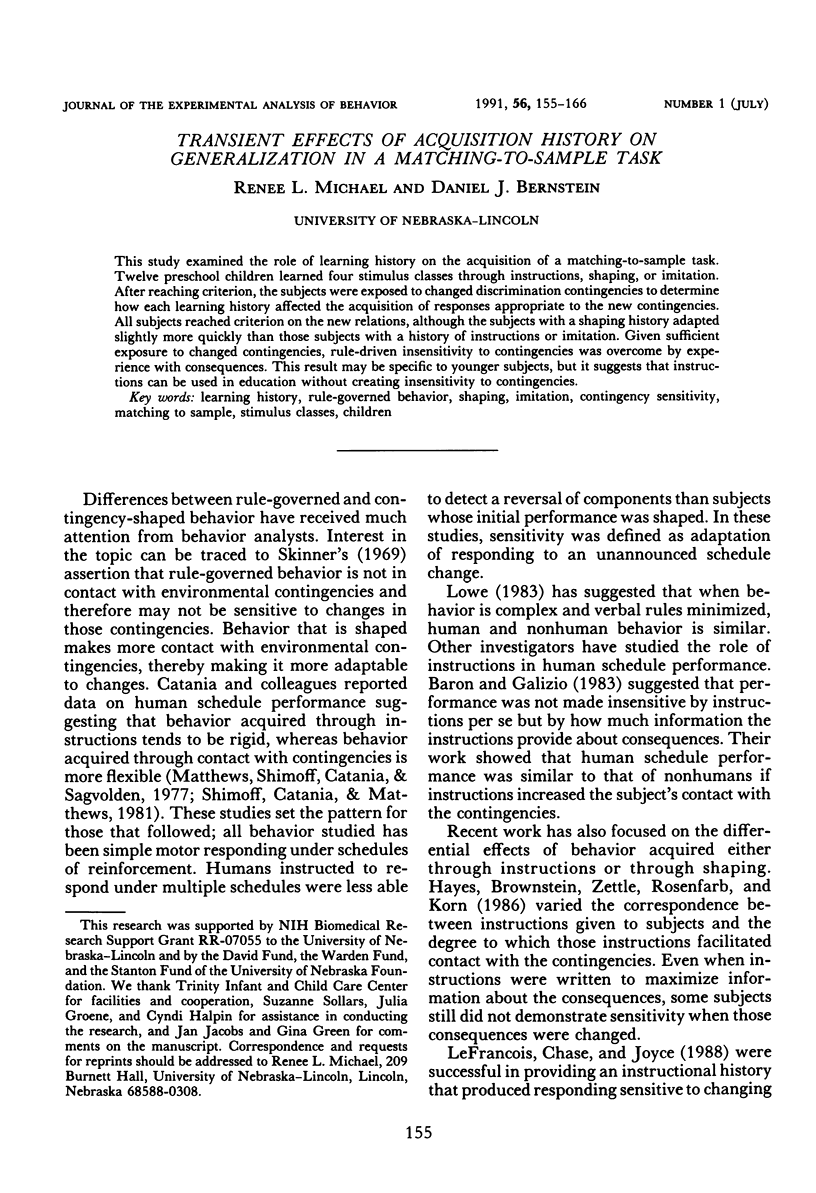
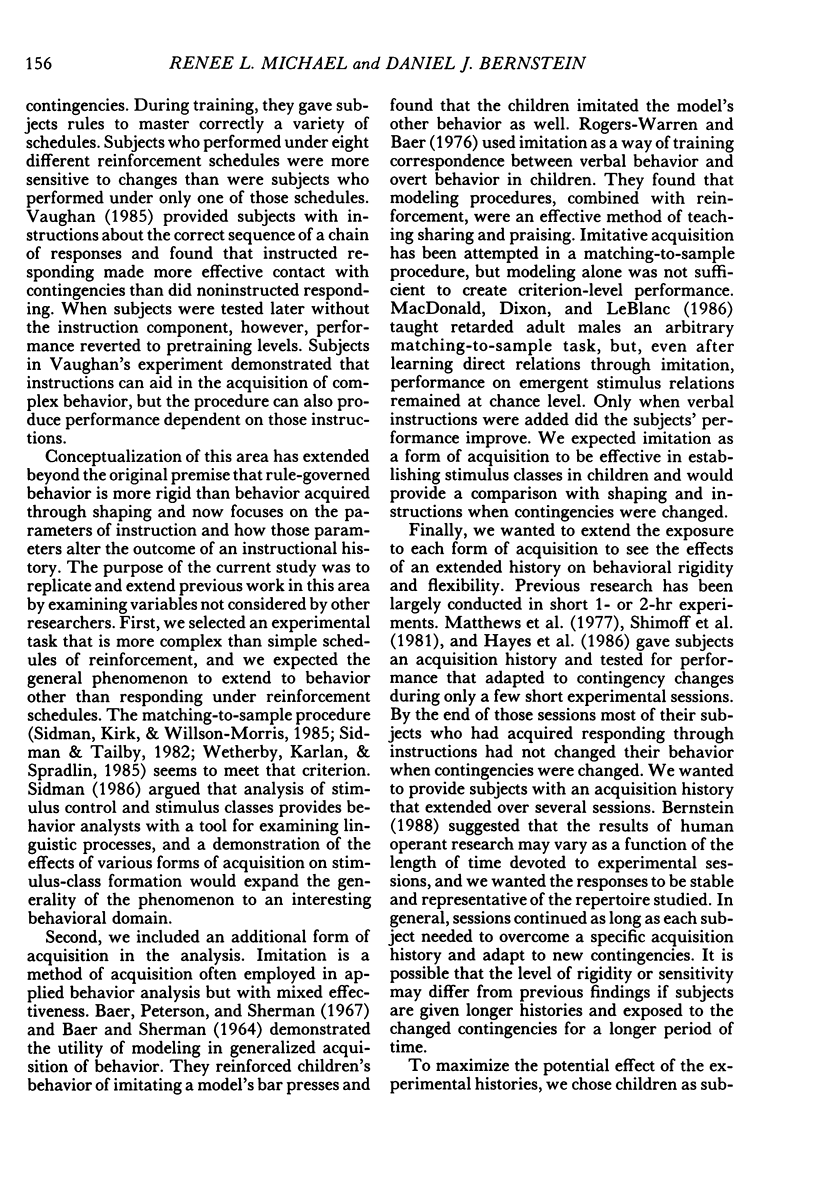
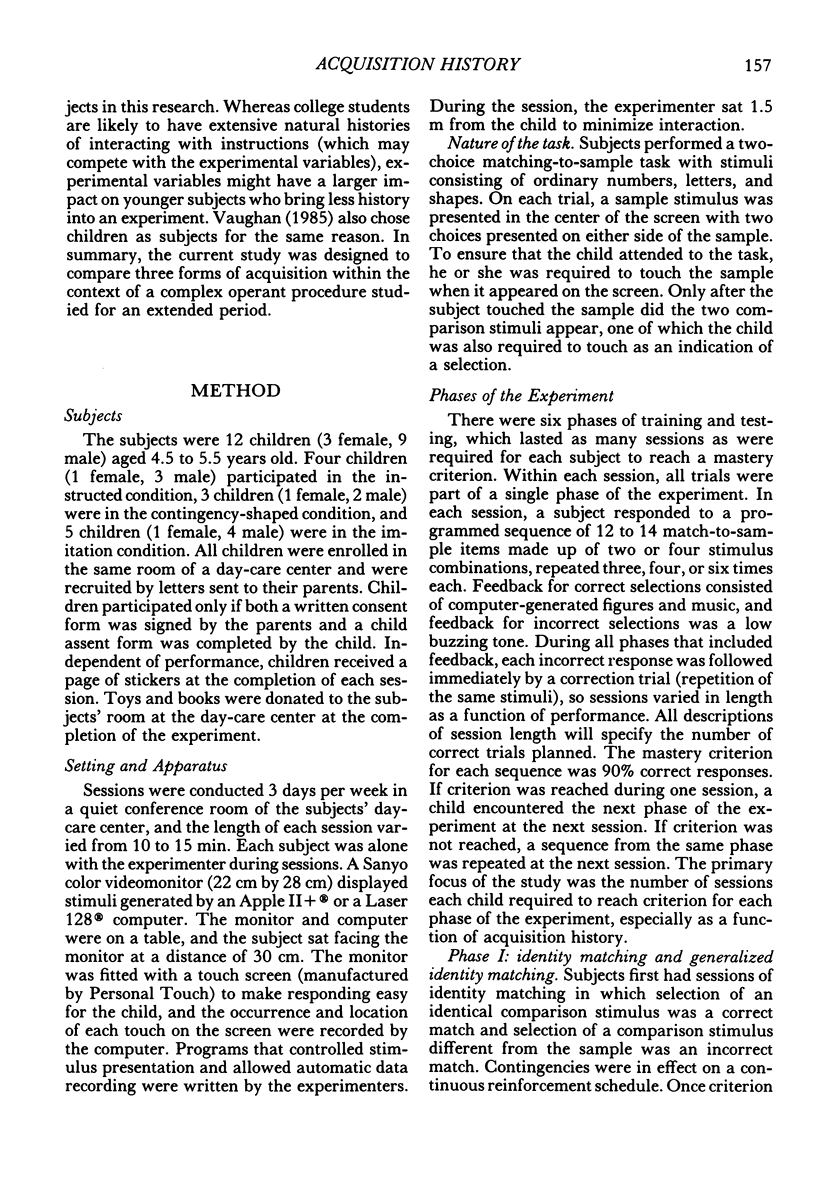
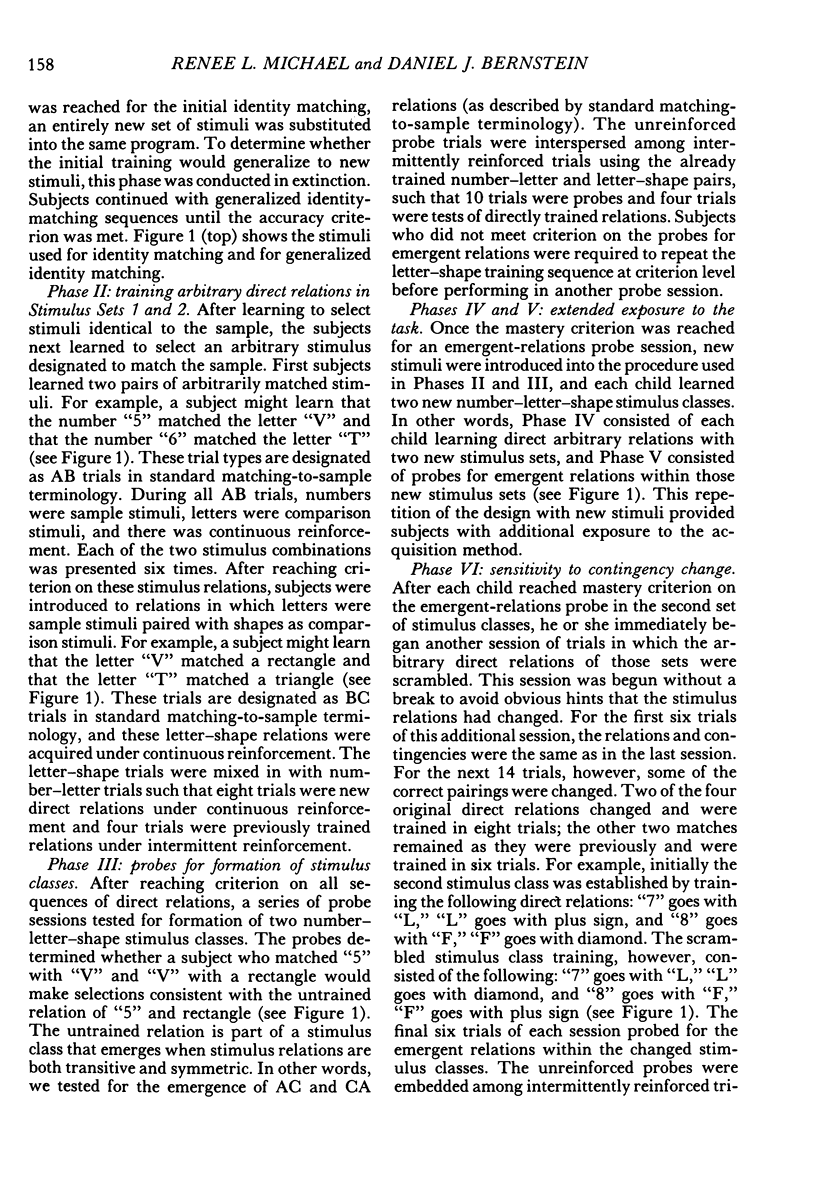
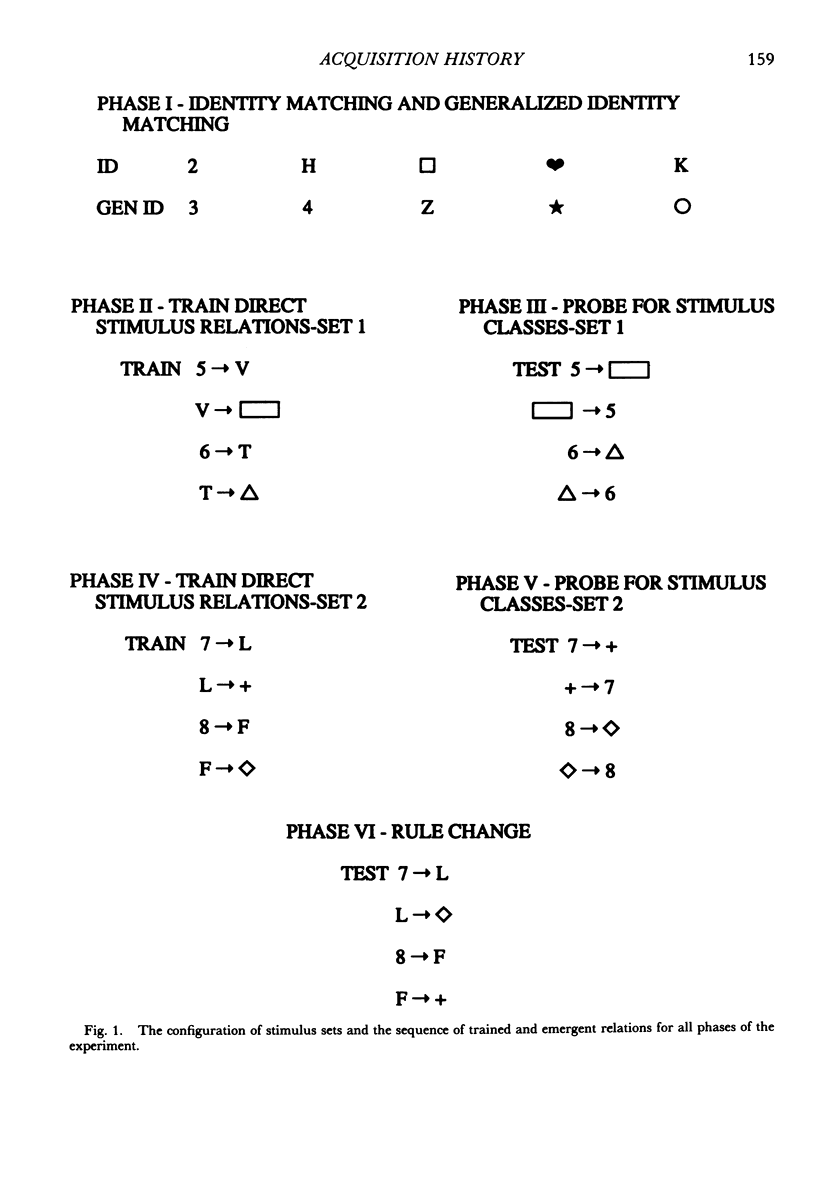
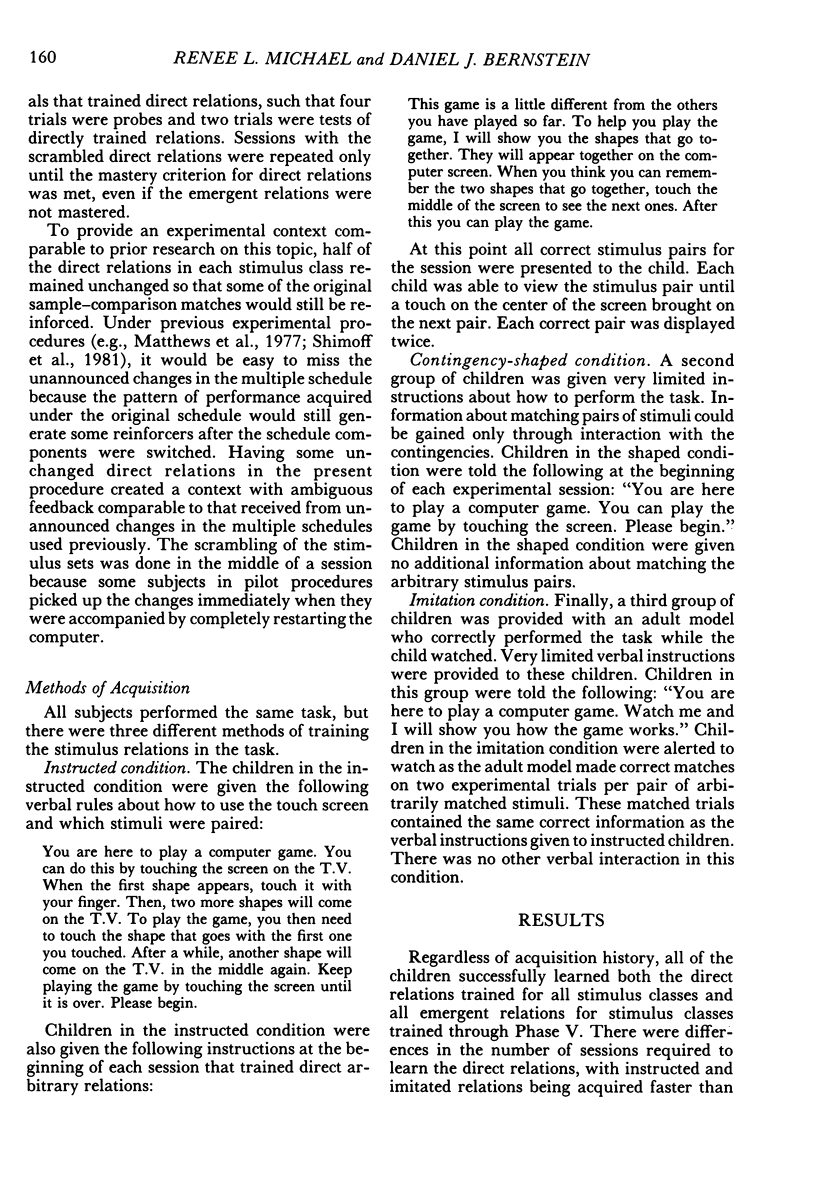
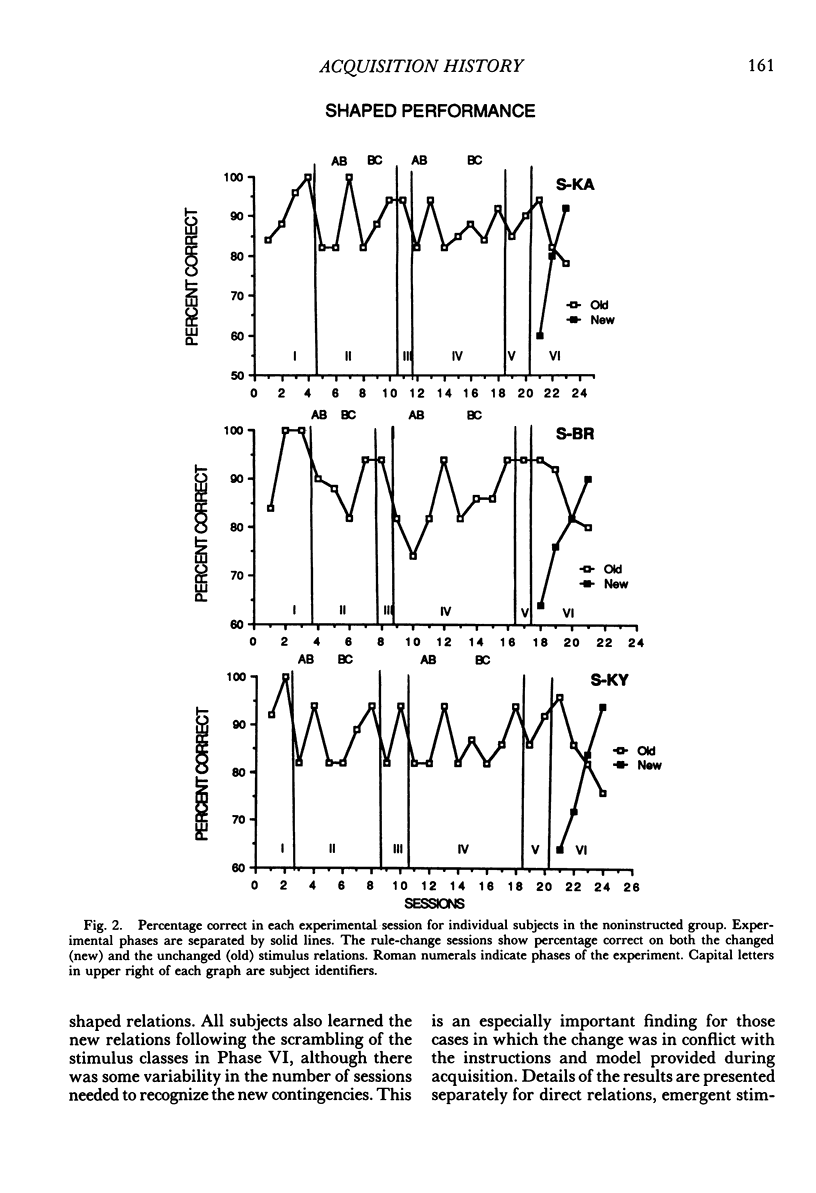
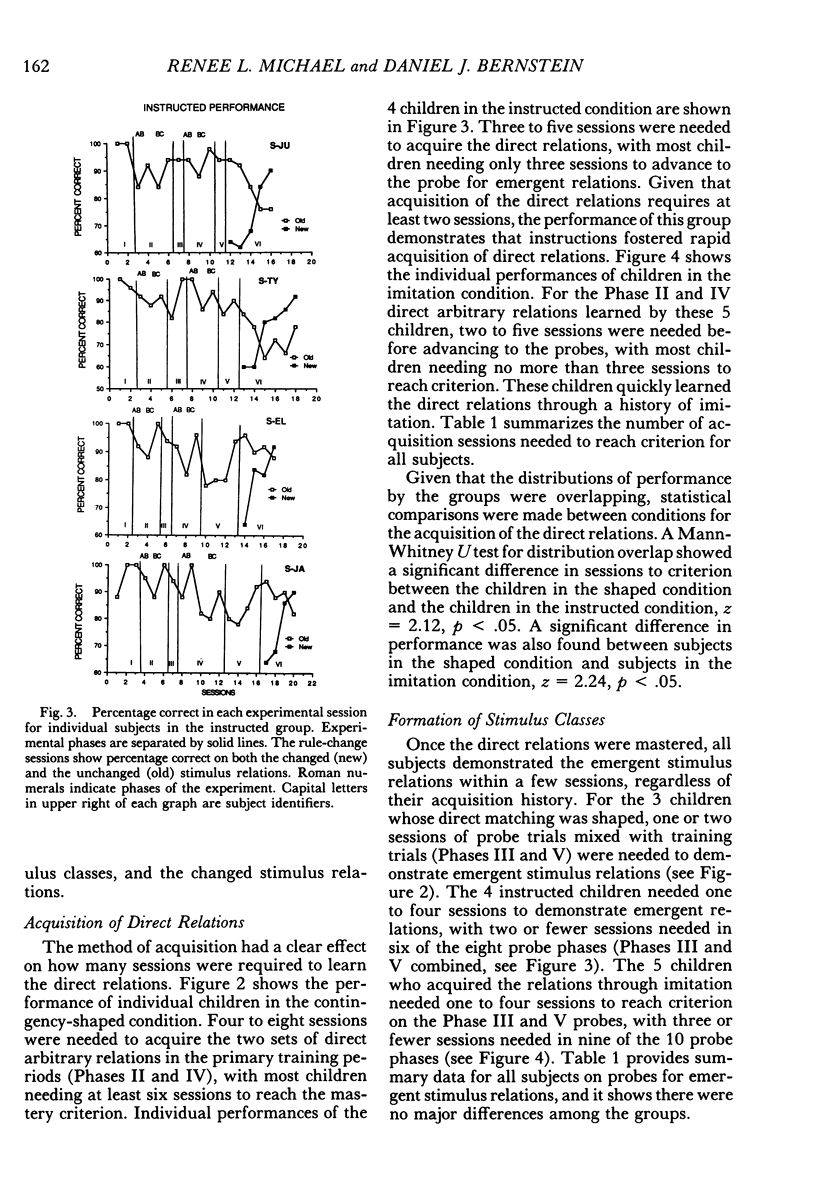

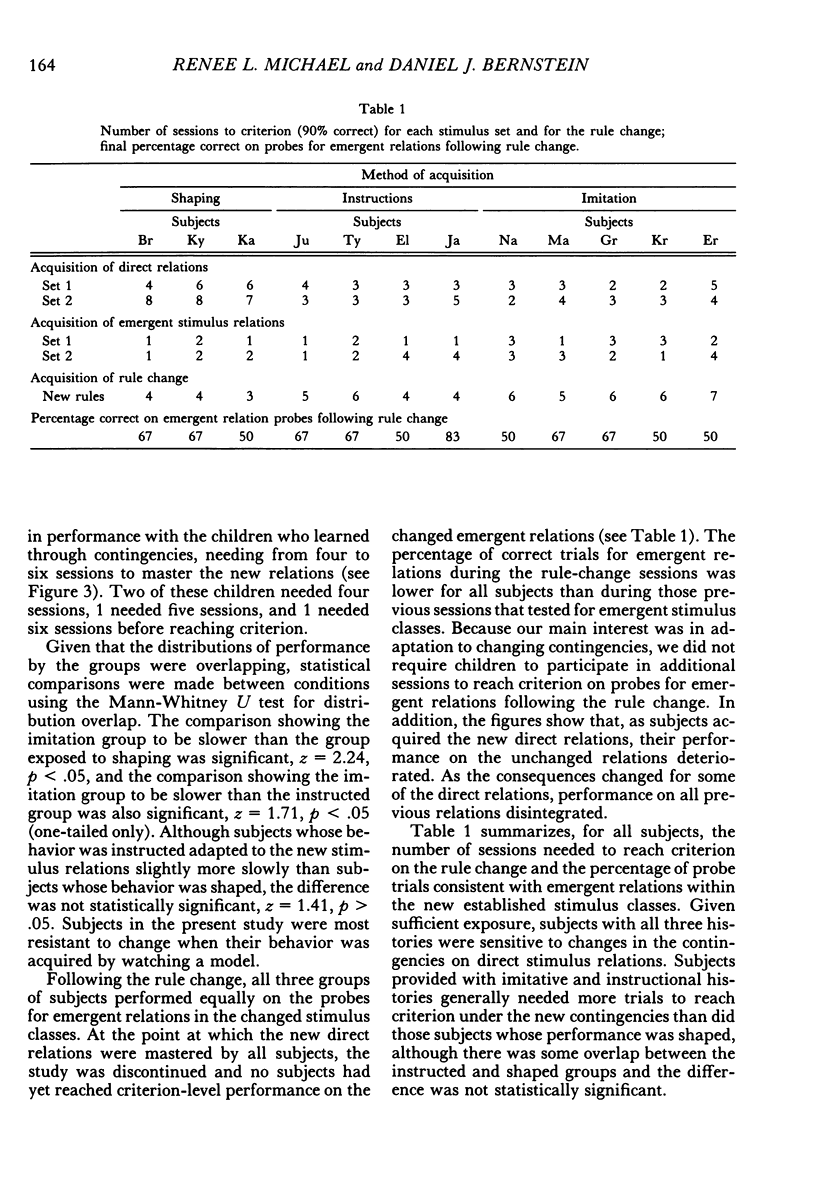


Selected References
These references are in PubMed. This may not be the complete list of references from this article.
- Baer D. M., Peterson R. F., Sherman J. A. The development of imitation by reinforcing behavioral similarity to a model. J Exp Anal Behav. 1967 Sep;10(5):405–416. doi: 10.1901/jeab.1967.10-405. [DOI] [PMC free article] [PubMed] [Google Scholar]
- Hayes S. C., Brownstein A. J., Zettle R. D., Rosenfarb I., Korn Z. Rule-governed behavior and sensitivity to changing consequences of responding. J Exp Anal Behav. 1986 May;45(3):237–256. doi: 10.1901/jeab.1986.45-237. [DOI] [PMC free article] [PubMed] [Google Scholar]
- Lefrancois J. R., Chase P. N., Joyce J. H. The effects of a variety of instructions on human fixed-interval performance. J Exp Anal Behav. 1988 May;49(3):383–393. doi: 10.1901/jeab.1988.49-383. [DOI] [PMC free article] [PubMed] [Google Scholar]
- Matthews B. A., Shimoff E., Catania A. C., Sagvolden T. Uninstructed human responding: sensitivity to ratio and interval contingencies. J Exp Anal Behav. 1977 May;27(3):453–467. doi: 10.1901/jeab.1977.27-453. [DOI] [PMC free article] [PubMed] [Google Scholar]
- Rogers-Warren A., Baer D. M. Correspondence between saying and doing: teaching children to share and praise. J Appl Behav Anal. 1976 Fall;9(3):335–354. doi: 10.1901/jaba.1976.9-335. [DOI] [PMC free article] [PubMed] [Google Scholar]
- Shimoff E., Catania A. C., Matthews B. A. Uninstructed human responding: Sensitivity of low-rate performance to schedule contingencies. J Exp Anal Behav. 1981 Sep;36(2):207–220. doi: 10.1901/jeab.1981.36-207. [DOI] [PMC free article] [PubMed] [Google Scholar]
- Sidman M., Kirk B., Willson-Morris M. Six-member stimulus classes generated by conditional-discrimination procedures. J Exp Anal Behav. 1985 Jan;43(1):21–42. doi: 10.1901/jeab.1985.43-21. [DOI] [PMC free article] [PubMed] [Google Scholar]
- Sidman M., Tailby W. Conditional discrimination vs. matching to sample: an expansion of the testing paradigm. J Exp Anal Behav. 1982 Jan;37(1):5–22. doi: 10.1901/jeab.1982.37-5. [DOI] [PMC free article] [PubMed] [Google Scholar]
- Vaughan M. E. Repeated acquisition in the analysis of rule-governed behavior. J Exp Anal Behav. 1985 Sep;44(2):175–184. doi: 10.1901/jeab.1985.44-175. [DOI] [PMC free article] [PubMed] [Google Scholar]
- Wetherby B., Karlan G. R., Spradlin J. E. The development of derived stimulus relations through training in arbitrary-matching sequences. J Exp Anal Behav. 1983 Jul;40(1):69–78. doi: 10.1901/jeab.1983.40-69. [DOI] [PMC free article] [PubMed] [Google Scholar]


